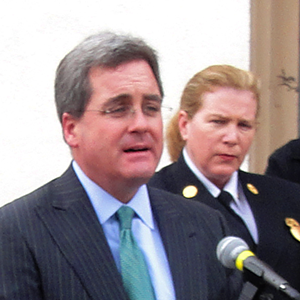Proposed $3.45 million settlement will resolve all claims on behalf of San Francisco taxpayers involving the tragic July 2013 crash Asiana Airlines caused at SFO

SAN FRANCISCO (April 13, 2016)—A proposed settlement agreement before the San Francisco Board of Supervisors would resolve all civil claims on behalf of City taxpayers against Asiana Airlines involving its July 6, 2013 crash at San Francisco International Airport, which killed three passengers and seriously injured some 50 other passengers, attendants and crew. The National Transportation Safety Board determined that the crash of Asiana flight 214 was caused by the Asiana-trained crew’s mismanaged approach, inadequately-monitored airspeed, and misunderstanding of auto-throttle and autopilot flight director systems.
Herrera’s proposed agreement, which is subject to Board approval, would resolve all of San Francisco’s unlitigated claims against the Seoul, South Korea-based airline with a payment of $3.45 million from Asiana Airlines to the city. The total would cover the city’s costs to the airport, for site cleanup, and for legal fees. It would additionally require that Asiana Airlines compensate the City’s aviation insurer on terms separate from its settlement with the City.
“This proposed settlement represents the final chapter in the sad tragedy Asiana caused, and we’re grateful to reach a resolution on our claims without the need for litigation,” City Attorney Dennis Herrera said. “As we remember those who lost their lives in Asiana’s tragic crash, we should also remember the extraordinary heroism of San Francisco firefighters and police officers who saved hundreds of lives that day. Our first responders fearlessly entered a burning plane moments after it crashed, successfully moving trapped passengers to safety and, in some cases, to lifesaving medical triage. In the face of enormous danger to their own lives, our firefighters and police showed selflessness and dedication that deserves our gratitude.”
NTSB member Mark R. Rosekind issued a statement on July 3, 2014, following NTSB’s determinations from its year-long investigation, which praised San Francisco’s first responders: “The critical role of the emergency response personnel at San Francisco International Airport (SFO) and the firefighters from the San Francisco Fire Department cannot be underestimated,” Rosekind wrote. “Although certain issues regarding communications, triage, and training became evident from the investigation and must be addressed, emergency responders were faced with the extremely rare situation of having to enter a burning airplane to perform rescue operations. Their quick and professional action in concert with a diligent flight crew evacuated the remaining passengers and prevented this catastrophe from becoming much worse. In addition, the emergency response infrastructure and resources at SFO that supported firefighting and recovery after the crash are admirable, significantly exceeding minimum requirements.”
Asiana Flight 214 struck the seawall short of SFO’s Runway 28L shortly before 11:30 a.m. on Saturday, July 6, 2013, beginning a violent impact sequence that sheared off the tail assembly, rotated the aircraft approximately 330 degrees, and created a heavy cloud of dust and debris before finally coming to rest approximately 2,300 feet from its initial impact site. The sheared-off tail assembly and force of rotation resulted in the ejection of five people: two crewmembers still strapped into the rear jump seats, and three passengers seated in the last two passenger rows. All three ejected passengers suffered fatal injuries: two died at the scene, and one died six days later.
With nearly 3,000 gallons of jet fuel venting from fuel lines where two engines detached during the crash sequence, a fire started in one engines that was wedged against the fuselage. A fire also began in the insulation lining the fuselage interior, beginning near the front of the aircraft. The interior fire produced heavy smoke inside the aircraft and posed extremely dangerous conditions given the volatility of leaking jet fuel and its proximity to potentially explosive oxygen tanks. In the face of imminent explosion, the rescue effort safely evacuated and triaged some 300 people. Asiana flight 214 carried 307 individuals: 4 flight crew, 12 cabin crewmembers and 291 passengers.
The proposed ordinance is S.F. Board of Supervisors File No. 160306, “Settlement of Unlitigated Claim—Asiana Airlines—City to Receive $3,450,000,” introduced April 12, 2016. Learn more about the San Francisco City Attorney’s Office at https://www.sfcityattorney.org/.
The National Transportation Safety Board’s June 24, 2014 Report Summary from the Crash of Asiana Flight 214 is available at: https://www.ntsb.gov/news/events/Pages/2014_Asiana_BMG-Abstract.aspx.
- Presskit PDF: Asiana accord closes tragic chapter, reiterates ‘extraordinary heroism’ of firefighters, police (April 13, 2106)
# # #